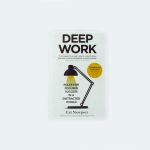My Experiment with Digital Blackouts for Extreme Focus
In a world constantly buzzing with notifications, emails, and the endless scroll, true, unadulterated focus feels like a mythical beast. My own attention span, once a reliable workhorse, had become a jittery gazelle, constantly darting between tasks, ideas, and the siren song of my smartphone. I was productive, yes, but rarely felt truly *absorbed*. My work lacked depth, my thoughts felt fragmented, and the profound satisfaction of deep concentration was a distant memory. This growing unease sparked an idea, a radical one: what if I completely cut off the digital noise? This wasn’t just about a “digital detox”; it was about initiating a full-blown “digital blackout” with a very specific, ambitious goal: to achieve extreme, unwavering focus.
The Seed of Discontent: Why My Digital Life Needed a Blackout
Before embarking on this journey, it’s crucial to understand the battlefield. My daily life was a symphony of digital distractions. My laptop, tablet, and phone were always within arm’s reach, each a portal to an infinite stream of information, entertainment, and obligation. I’d start an important report, only to find myself checking a news headline, then a social media update, then an email that “just popped up.” Each micro-interruption chipped away at my cognitive energy, leaving me feeling mentally fatigued without having truly accomplished anything substantial.
I realized I was living in a state of constant partial attention. My brain was excellent at context-switching, but terrible at sustained engagement. The quality of my output suffered, and creative breakthroughs became rare. I yearned for the kind of focus where hours melt away, where I’m so immersed in a task that the outside world fades into oblivion – what psychologists call a “flow state.” It was clear my current digital habits were an impenetrable barrier to that. The experiment wasn’t merely about reducing screen time; it was about strategically eliminating digital inputs for specific, concentrated periods to see if I could reclaim my brain’s natural capacity for deep work. I wasn’t just tired of being distracted; I was tired of feeling like my brain was being held hostage by algorithms.
Recognizing the Invisible Leaks in My Mental Energy
The insidious nature of digital distraction lies in its subtlety. It’s not always a blaring notification; often, it’s the subconscious urge to check something, the fleeting thought that pulls you away. I noticed these “invisible leaks” everywhere: during conversations, while reading a book, even in moments of quiet reflection. My mind was always primed for the next digital input, preventing true presence. This constant readiness for interruption was exhausting. I felt like a human router, always routing information but never truly processing it deeply. This recognition became the primary motivator for my drastic approach.
Designing My Digital Silence: Defining the Blackout Parameters
A true experiment requires clear parameters. My “digital blackout” wasn’t a vague notion; it was a carefully structured plan. I decided to implement two distinct types of blackouts over a four-week period, alternating them to observe different effects. The goal was not permanent abstinence, but strategic, high-intensity periods of digital disconnection.
- The “Deep Work Sprint” Blackout (Daily, 3 hours): Each weekday morning, from 8 AM to 11 AM, I would enter a complete digital blackout. My phone would be powered off and placed in another room. My laptop would be used only for pre-downloaded, essential work tasks (e.g., writing in a word processor with Wi-Fi disabled). No internet browsing, no email, no messaging apps. This was dedicated time for my most cognitively demanding tasks.
- The “Weekend Recharge” Blackout (Saturdays, 12 hours): Every Saturday, from sunrise to sunset, I would go completely offline. No phone, no laptop, no TV, no smart devices beyond a basic alarm clock. This was intended for personal projects, reading, outdoor activities, and genuine rest, completely free from digital influence.
I also made a crucial environmental adjustment: my workspace. During these blackout periods, my desk was stripped bare of anything digital that wasn’t absolutely necessary. Physical notebooks, pens, and printed materials became my primary tools. This created a strong visual cue and reduced the temptation to “just quickly check.”

Setting Up the Rules of Engagement with My Digital Self
Beyond the timeframes, I established a few ground rules for myself:
- Inform key contacts: I let my team and family know about my blackout periods to manage expectations and avoid emergencies.
- Prepare offline resources: Any articles, documents, or research I needed for my blackout sprints were downloaded beforehand.
- Embrace analog alternatives: For notes, planning, and brainstorming, I relied solely on paper.
- Observe and journal: I committed to keeping a physical journal to track my feelings, challenges, and breakthroughs during and after each blackout. This was critical for understanding the “experiment” part of my journey.
Navigating the Initial Static: Early Days of Unplugging
The first few days were, to put it mildly, a struggle. My brain, accustomed to constant stimulation, rebelled. During the morning sprints, I felt an almost physical urge to reach for my phone, to open a new browser tab. It was like a phantom limb syndrome for my digital devices. My focus felt worse, not better, as my mind battled against ingrained habits. I experienced what I now call “digital withdrawal symptoms”: restlessness, mild anxiety, and a pervasive sense of missing out (FOMO).
The weekend blackouts were particularly jarring. Hours stretched out, feeling oddly empty at first. I’d catch myself automatically reaching for my phone to snap a photo, check the weather, or simply fill a quiet moment. Without the instant gratification of digital input, boredom surfaced, bringing with it a torrent of previously suppressed thoughts and anxieties. This initial phase was less about extreme focus and more about confronting the sheer magnitude of my digital dependency.
Confronting the Urge to Reconnect: The Brain’s Protest
One profound realization during this period was how deeply ingrained the habit of “checking” had become. It wasn’t just about productivity; it was a coping mechanism, a way to avoid discomfort, silence, or challenging tasks. When faced with a difficult paragraph to write or a complex problem to solve, my brain’s immediate impulse was to seek distraction. The blackouts forced me to sit with that discomfort, to push through the initial resistance, and to trust that focus would eventually emerge. It was a powerful lesson in self-discipline and mental resilience.
Unlocking the Flow: The Profound Shift in My Focus
Around the end of the first week and into the second, something remarkable began to happen. The initial “static” started to clear. During my daily deep work sprints, the urge to check my phone diminished. I found myself diving into tasks with a level of immersion I hadn’t experienced in years. The hours that once felt long and arduous now flew by. I was able to hold complex ideas in my mind for longer, connect disparate concepts, and solve problems with a clarity that had previously eluded me.
This wasn’t just about getting more done; it was about the *quality* of my engagement. My writing became more fluid, my coding more elegant, and my strategic thinking more incisive. I entered true flow states, where I was completely absorbed, losing track of time and self. It was exhilarating. The “extreme focus” I had aimed for was no longer a theoretical concept; it was a tangible, repeatable experience.
Measuring the Immeasurable: Signs of Extreme Focus
While “extreme focus” isn’t a quantifiable metric in the traditional sense, I observed several indicators:
- Time distortion: What felt like 30 minutes would often turn out to be an hour or more.
- Reduced mental fatigue: Despite intense concentration, I felt less drained at the end of a deep work session.
- Enhanced problem-solving: Complex issues that once seemed insurmountable became manageable.
- Higher quality output: The work I produced during these blackouts was consistently better, requiring fewer revisions.
- Increased enjoyment: The act of working itself became more satisfying and even joyful.
My strategies for deep work, which felt like a constant uphill battle before, now felt natural and effortless during these blackout periods.
Beyond the Screen: Unexpected Ripples of My Experiment
The benefits of my digital blackout experiment extended far beyond improved focus during work hours. The weekend blackouts, in particular, brought about a profound sense of mental spaciousness and rejuvenation. Without the constant influx of information, my mind had room to breathe. I noticed an increase in creativity, as my brain, freed from external demands, began to generate its own novel ideas.
My relationships also benefited. When I spent time with family and friends, I was truly present, listening more intently and engaging more deeply. My sleep improved dramatically, as the absence of blue light and mental stimulation before bed allowed me to unwind naturally


